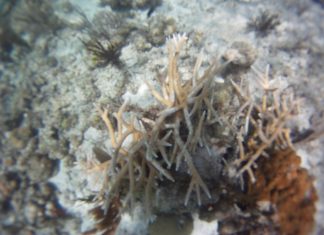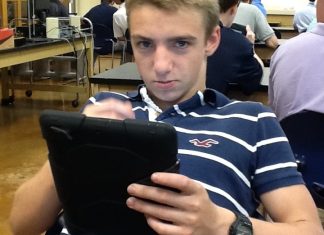Charles Patrick '14
Saviors of the reef
After sightseeing and absorbing the awesomeness of the BVIs for a while, today we helped contribute to the health of a coral reef ecosystem by transplanting elkhorn and staghorn coral. In the morning, we woke up, and our diver Glenn took us down the marina for breakfast. While eating. Drew gave me the fantastic idea of using a breakfast...
Rhone day
For a while, I thought that the views and experiences could not get any cooler than what we saw on yesterday's dive, but today's dives blew them out of the water. After we woke up, we went down to the marina for breakfast, which consisted of banana bread, sausage, and eggs. We then took a 40 minute boat ride...
Day 2
Today we learned about the coral, fish, crustaceans, and other invertebrates that live in and around the reefs. Before lunch, we snorkeled in savannah bay, and I saw a stingray, and many sea eggs (spiny white things that look like urchins). After lunch,we dove in the area known as the chimney, where we swam through an underwater cavern with...
First dive!
The first ocean dive of the trip was a 45 minute long, 58 foot deep dive around reefs and shelves. Entering the water, we were initially at about 20 feet, and at that depth there were a few small fish. The deeper we descended, the larger and more diverse the organisms became. We saw three lobsters, some arrow crabs,...
Squirrelfish
The squirrelfish is a bony fish that is related to the ray finned fishes. They feed mostly on benthic invertebrates, and smaller fish. Some of the spines on the fish are poisonous and can inflic
Mindful wounds.
Stingray
Stingrays are cartilaginous fishes, which are related to sharks. They usually have flattened, elongated bodies, with their eyes and fills on their dorsal surfaces and their mouths on their ventral sides of their bodies. Some species of ray have stingers in their tails, with poison glands that they primarily use for self defense against predators and humans.
Charlie Patrick and the classroom
In the first few days of class, we have been learning the basics of marine biology; about the ocean, currents, waves, tides, zones and the organisms that live there. We are getting accustomed to using our iPads in the classroom, and discovering their large amounts of functions for learning as well as fun.







